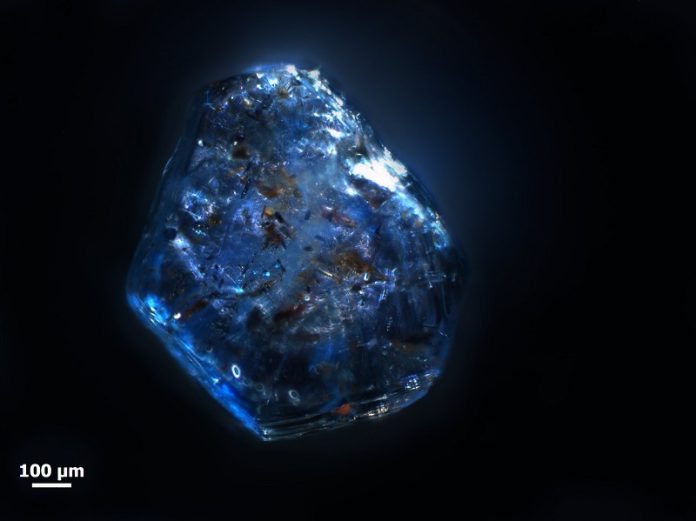
Researchers at Heidelberg University are studying how sapphires, the beautiful blue gemstones, formed in volcanic regions.
Although sapphires are precious, they are actually made of “contaminated” aluminum oxide, known as corundum.
These gems are mostly found in silicon-poor volcanic rocks, leading scientists to believe that sapphires originate deep within the Earth’s crust and are brought to the surface by rising magma.
Geoscientists at Heidelberg University conducted geochemical analyses and discovered that the millimeter-sized sapphires in the Eifel region of Germany are indeed connected to volcanic activity.
This research has been published in the journal Contributions to Mineralogy and Petrology.
The Eifel is a volcanic area in central Europe where magma from the Earth’s mantle has been pushing through the crust for nearly 700,000 years.
This magma is low in silicon dioxide but rich in sodium and potassium, a composition often linked to sapphire deposits around the world. However, why sapphires are commonly found in these volcanic deposits was unclear until now.
Professor Dr. Axel Schmitt, who researches isotope geology and petrology at Curtin University in Australia and is an honorary professor at Heidelberg University, explains that one theory is that sapphires form from clayey sediments at high temperatures and pressures in the Earth’s crust.
The rising magma then acts as an “elevator,” bringing the crystals to the surface.
To test this idea, researchers examined 223 sapphires from the Eifel. Some of these small crystals were found in volcanic rock samples from local quarries, but most came from river sediments.
Like gold, sapphires are very resistant to weathering and can be separated from lighter river sediments using a gold pan.
The researchers used the uranium-lead dating method and a secondary ion mass spectrometer to analyze mineral inclusions and oxygen isotopes within the sapphires.
These isotopes, O-16 and O-18, act like fingerprints, revealing the origin of the crystals. Deep crustal rocks have more O-18 compared to mantle melts.
The analysis showed that the sapphires in the Eifel formed during the same period as the volcanic activity. Some sapphires inherited the isotopic signature of mantle melts contaminated by heated crustal rock at depths of five to seven kilometers.
Other sapphires formed when these melts interacted with surrounding rocks, triggering sapphire formation.
Sebastian Schmidt, who conducted the study for his master’s degree at Heidelberg University, explains that both magmatic and metamorphic processes played a role in sapphire crystallization in the Eifel. This means that temperature changes in the original rock contributed to sapphire formation.
In summary, this study sheds light on how volcanic processes in the Eifel region of Germany led to the formation of beautiful blue sapphires, combining both magmatic and metamorphic processes to create these precious gems.



